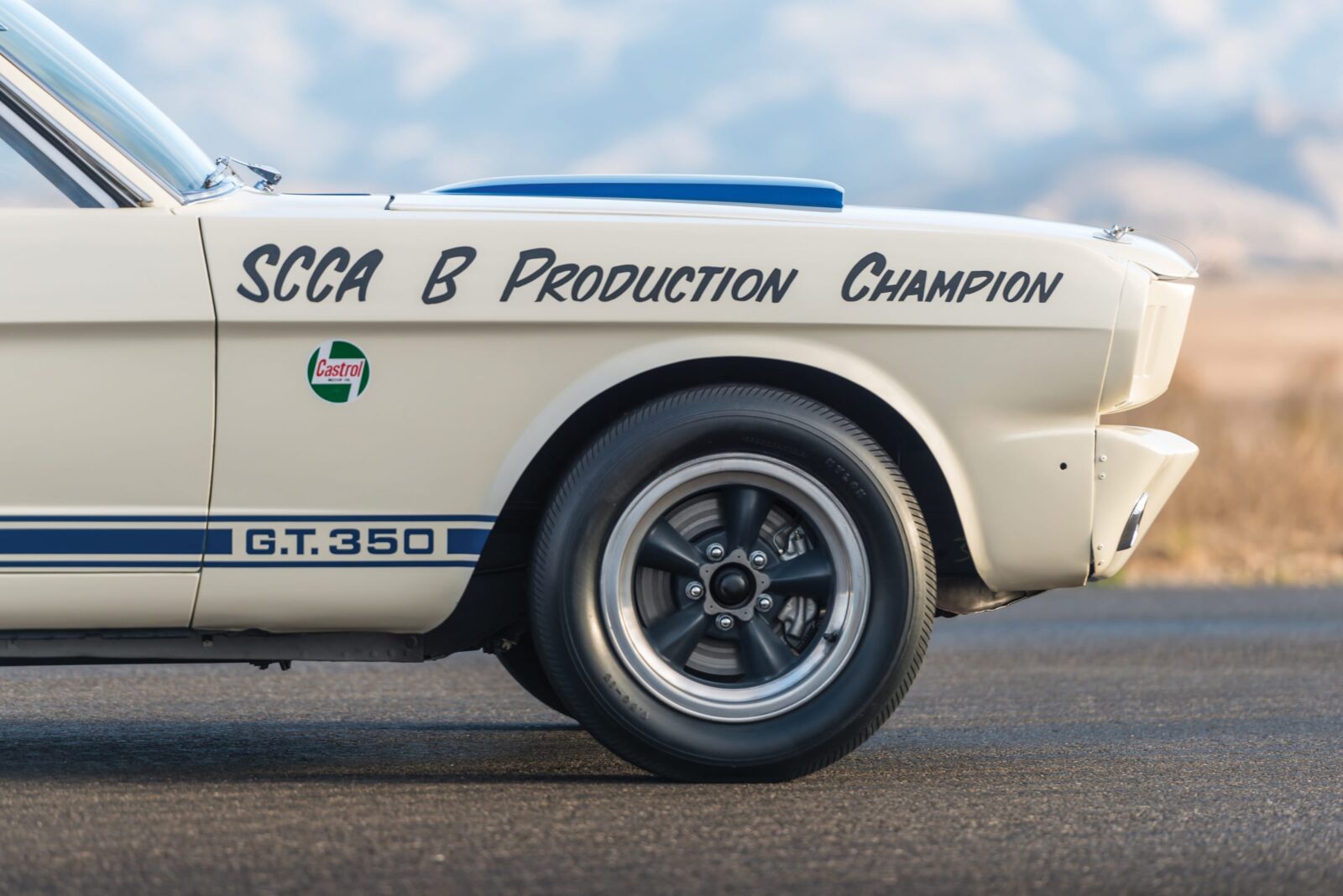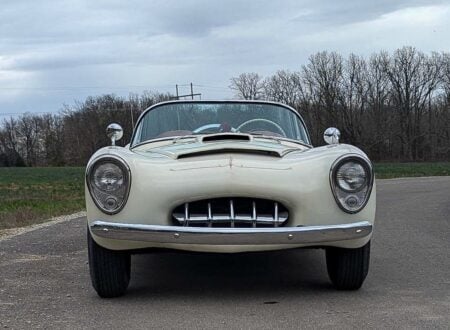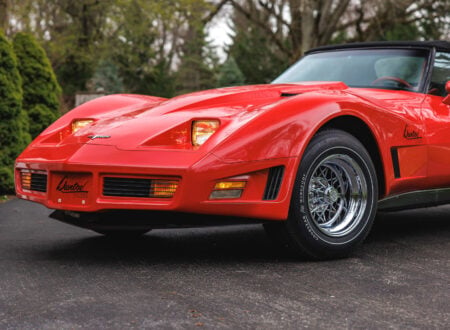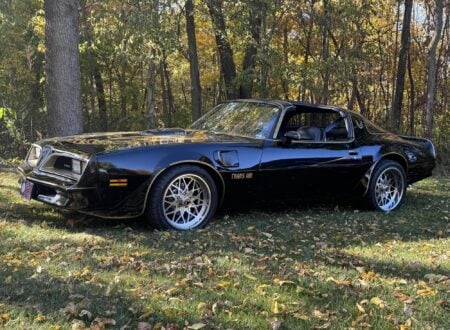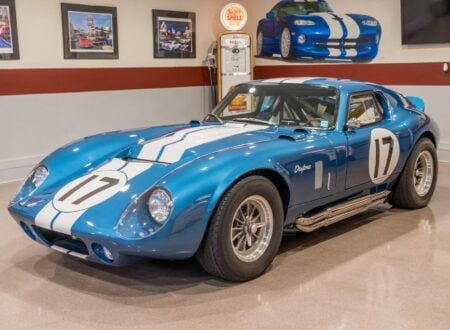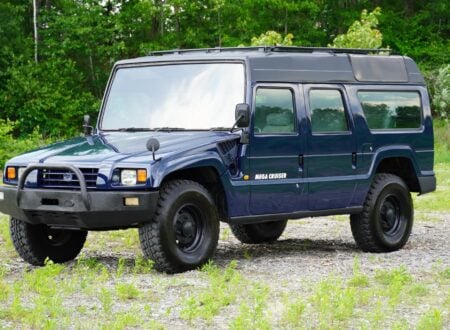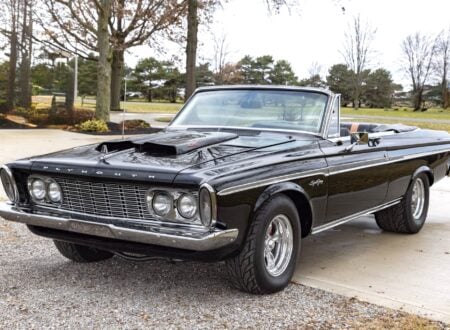Carroll Shelby
In 1965, the Shelby American Company was far less famous than they are now. Carroll Shelby was a retired race car driver with a win a Le Mans under his belt, and a congenital heart condition that meant he often need to pop nitroglycerin tablets under his tongue while driving to manage his chest pain.
After his 24 Hours of Le Mans win with Aston Martin and co-driver Roy Salvadori in 1959, he decided to retire. Largely at the behest of his doctors, who feared for his life. Shelby was never going to be the kind of man to retire and take up bingo, and before long he had his first major performance car on the way – a British AC Ace roadster with a Ford V8 squeezed under the hood.
In a masterstroke of marketing he called it the “Shelby Cobra” and a legend was born. By 1965 his relationship with Ford had been further cemented, and he was both building Ford-engined AC roadsters, and modifying Ford Mustangs into fire-breathing, street-legal race cars called the GT350.
The Cobra Caravan
Carroll always had a talent for showmanship, so to further drum up interest in his vehicles he created the Cobra Caravan in 1965 as a traveling car show with a rotating cast of 6 cars. There was a Cobra Daytona coupe, a Ford GT 40, both 289 and 427 versions of the Cobra, and two GT350 Shelby Mustangs – a stock GT350, and the GT350 R you see here.
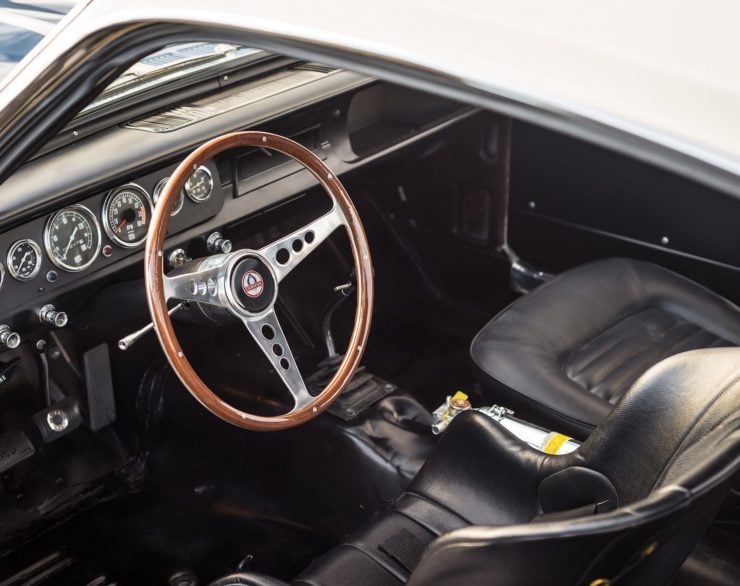
The Cobra Caravan 1965 Shelby GT350 R Shown Here
The car you see here is the one picked by Shelby to be part of the original 1965 Cobra Caravan, after the traveling car show was disbanded in 1966 the car was shipped to Peru as a package of five cars. A group of millionaire Peruvians had hatched a plan worthy of a Hollywood script – they would each buy identical cars and then race each other in Alpine-style rallies, in a true test of driver ability, as no man could claim to have a slower vehicle.
The car would take part in the first running of the Caminos del Inca (Inca Rally) in 1966 with owner/driver Julio Martinetti and co-driver Víctor “Coco” Cárdenas. It finished in 6th place with a total time of 28 hours, 5 minutes, and 22 seconds – after 3,000 kms of brutal, twisting South American roads.
Somehow, the GT350 R survived the decades of political turmoil that would engulf the region, reappearing in 1984 when it was one of three surviving Peruvian GT350s, one other had been wrecked and another may still be hidden somewhere in Peru.
The cars were brought back to the USA by Arkansas collectors Richard Cohen and Gary Nufer, it would become part of the collection of Corey Lawson, then the noted Shelby enthusiasts, Len and Linda Perham, before being bought by its current owner.
More recently marque specialist John Brown of Thoroughbred Restorations, spent three years further refining the car up to his exacting standards. Since Brown finished the car it’s won all three of the most significant awards for a GT350 – Gold Concours at SAAC 42 in Indianapolis – Gold Concours at the Mid-America Shelby Nationals in Tulsa – and an MCA Gold at the Grand Nationals in Kansas City, all in 2017 – a rare “Triple Crown” for a GT350.
If you’d like to read more about the car or register to bid, you can click here to visit the listing. It’s due to be offered for auction by RM Sotheby’s between the 18th and 19th of January in Arizona, with an estimated hammer price of $1,000,000 and $1,200,000 USD.
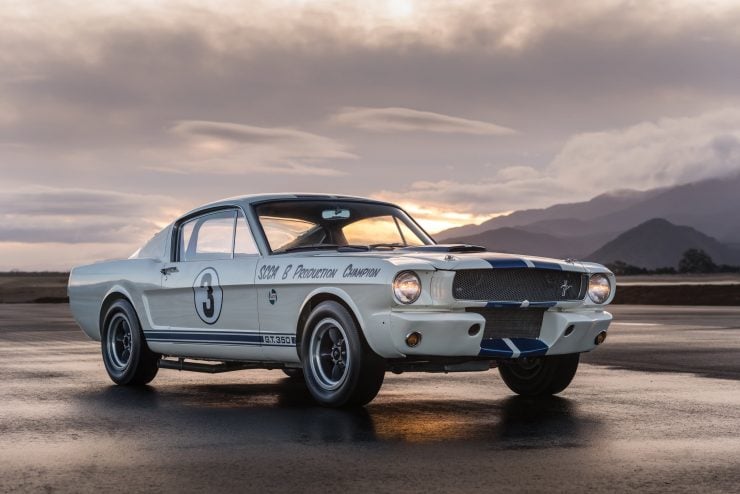
A BRIEF HISTORY OF THE SHELBY GT350
The idea of getting racing legend Carroll Shelby to work his magic on the then-new Ford Mustang is credited to Lee Iacocca – a Ford icon who realized the promotional benefit the new Mustang would receive if there was a Shelby variant beating Corvettes on the race tracks of America.
Each of the 1965/1966 Shelby Mustangs were built in the Venice, California Shelby factory right next to the AC Cobras – another passion project supported by Ford.
Each car started life as a stock Ford Mustang Fastback, with a 271 hp, K-code 289 cubic inch V8 and a 4-speed manual gearbox. The team at Shelby fitted these cars with a “Cobra Hi-Riser” intake manifold Tri-Y exhaust headers, bigger Ford Galaxie rear drum brakes (with metallic-linings), Kelsey-Hayes front disc brakes, a 9-inch Detroit Locker differential, “Export” bracing in the engine bay, a T-10 Borg Warner 4-speed manual gearbox (with an aluminum housing), and a lightweight fiberglass hood with a functional scoop.
With the Shelby tweaks applied the horsepower rating jumped to 306 hp and 330 ft lbs of torque. Due to SCCA rules the car was only allowed two seats to be permitted in the sports car class, so the rear seats were replaced with a spare tire.
Carroll Shelby had spent years in Europe working with British and Italian racing car builders, and he’d learned a lot about suspension and handling. When it came time to modify the suspension on the Mustang he completely repositioned the front mounting points, strengthened the spring towers, added a bigger sway-bar, and lowered the A-arms – reducing the right height of the front end by an inch.
In the rear he specified uprated stronger torque reaction arms on top of the axle, adjustable Koni shocks, strong anti-sway bars, and traction bars.
All of these modifications made the Shelby GT350 significantly quicker than their stock brethren – though they were notably less comfortable to live with as a daily driver.
Today the surviving GT350s from 1965 and 1966 are loved by enthusiasts as they were built by Shelby’s men at his own factory – under his watchful gaze. During 1967 production was handed off to Ford and the cars got a little heavier and a little less extreme, by 1970 production had ceased and it would remain shut down until the nameplate made a comeback in the early 2000s.
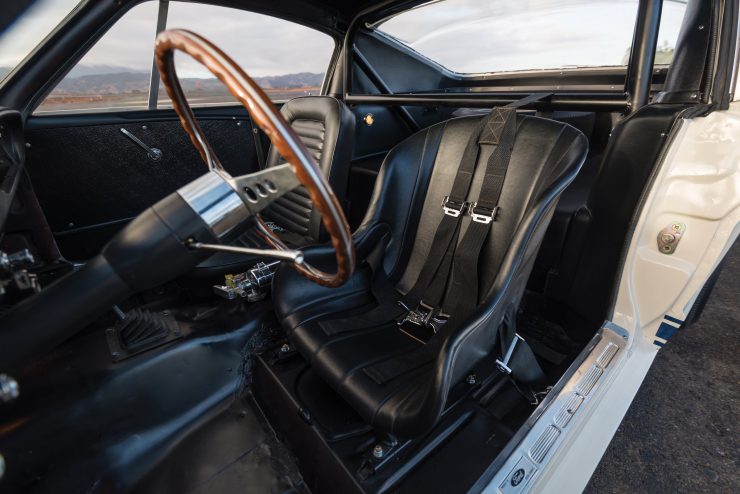
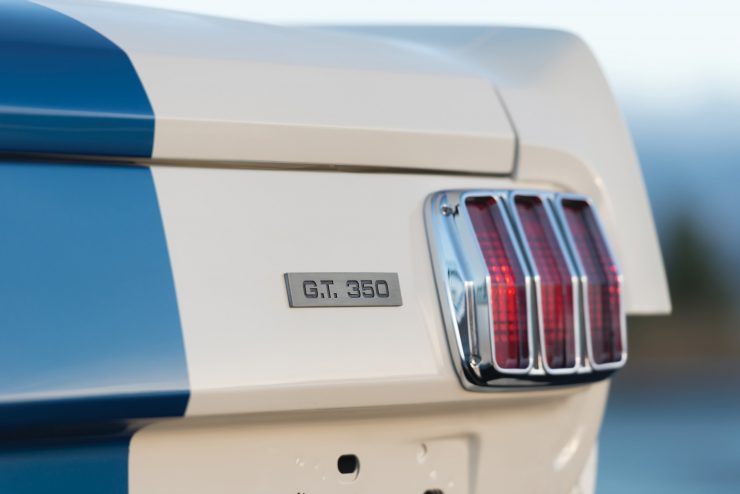
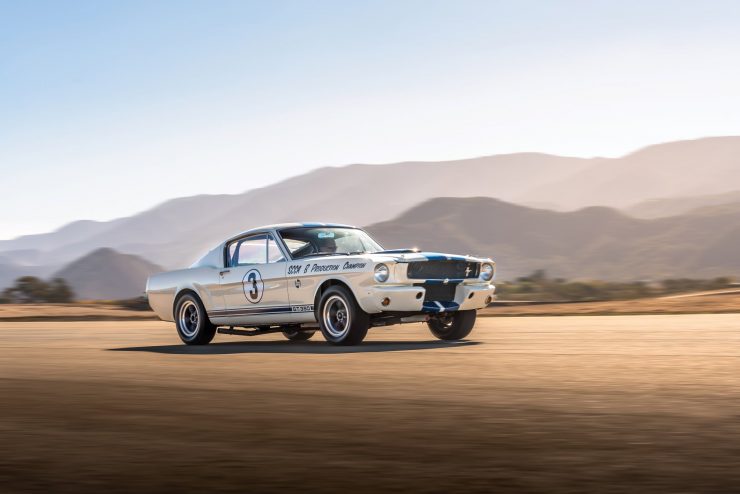
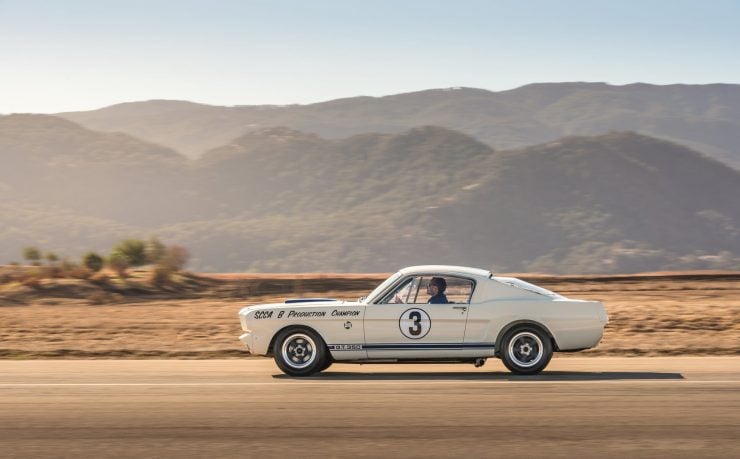
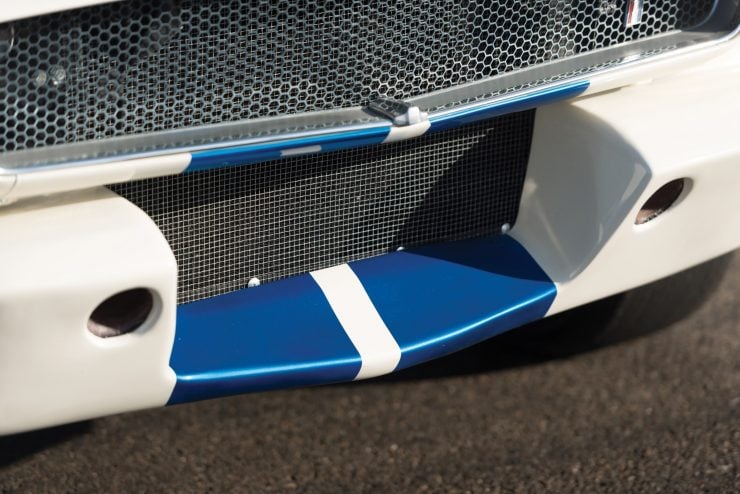
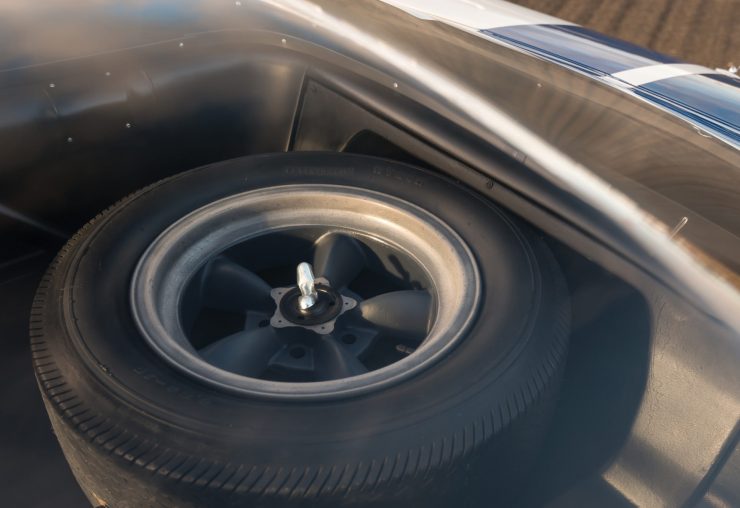
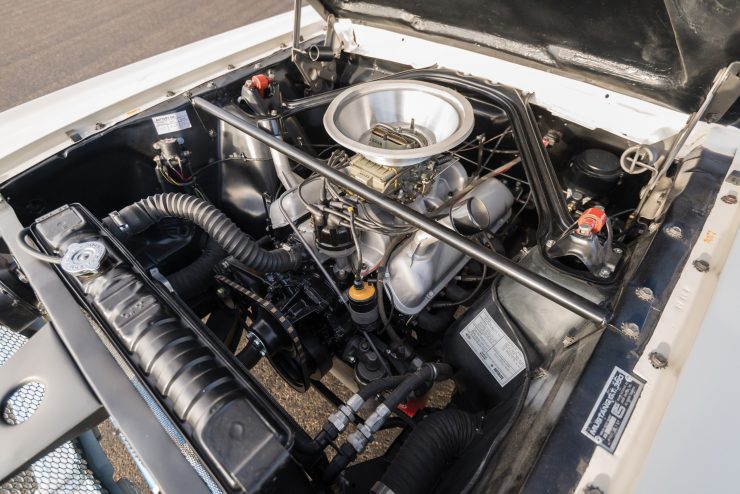
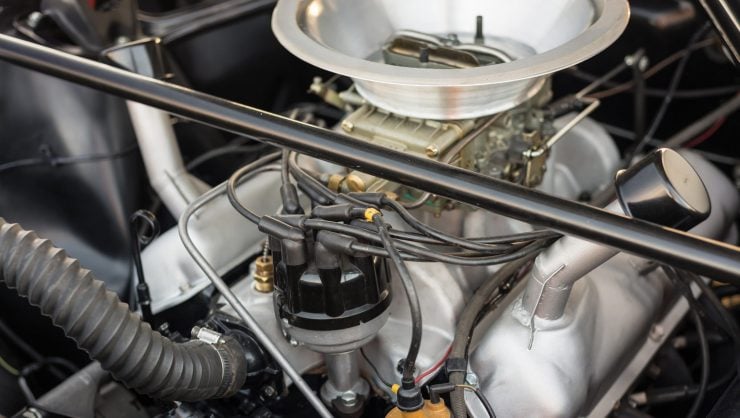
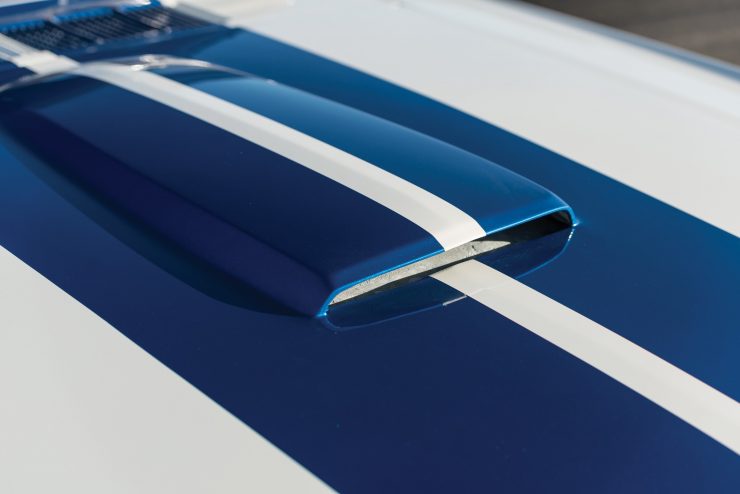
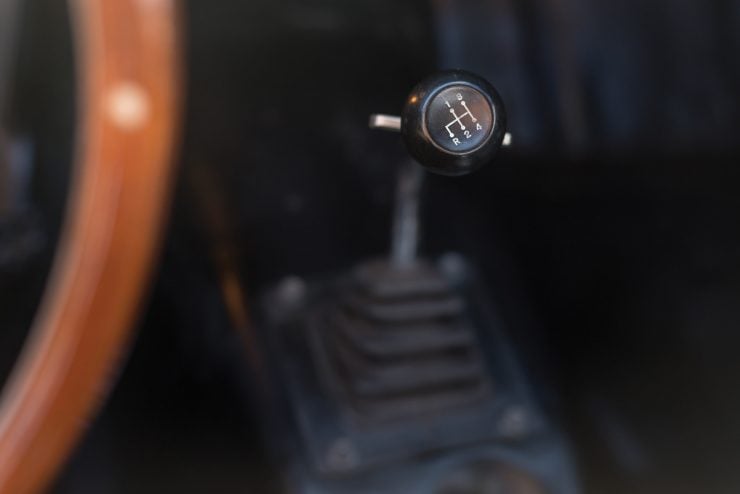
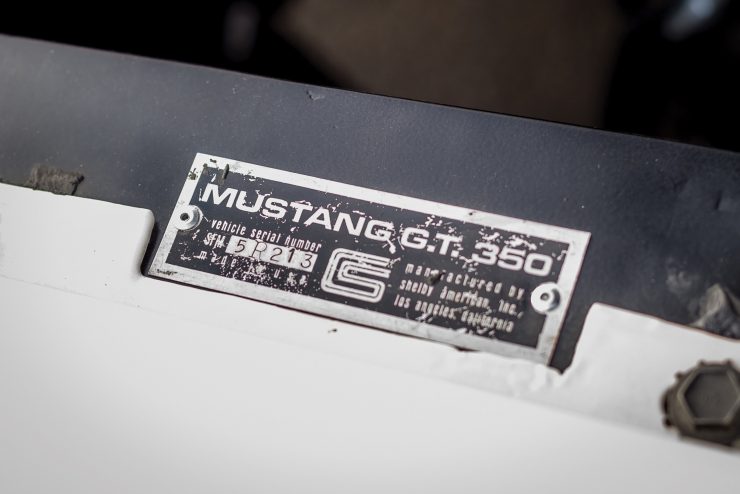
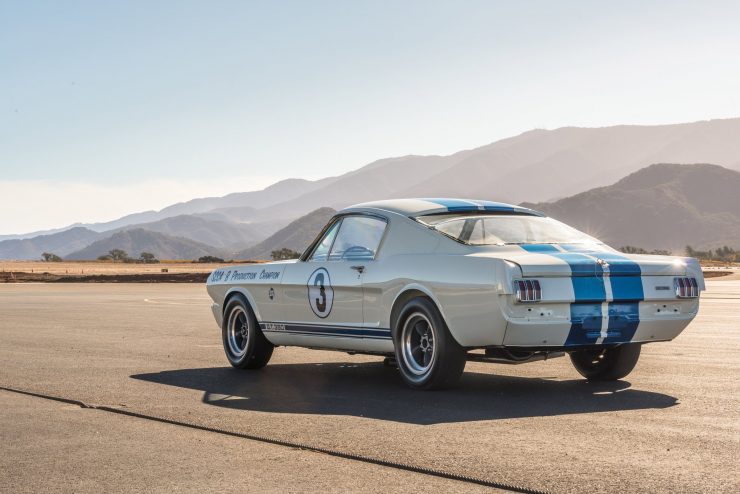
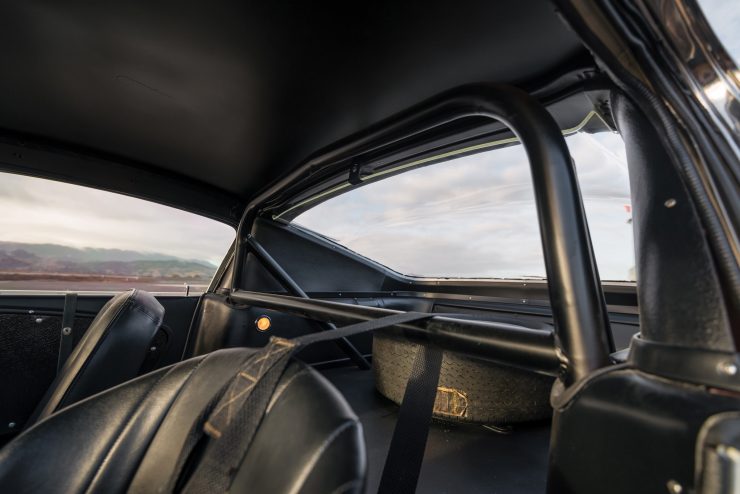
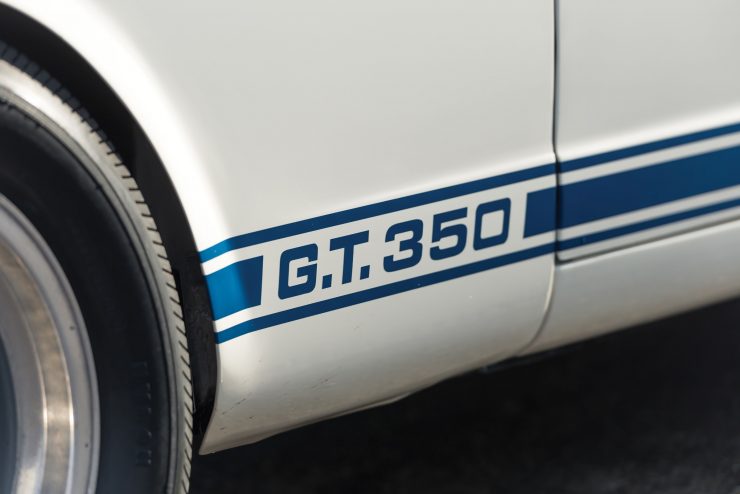
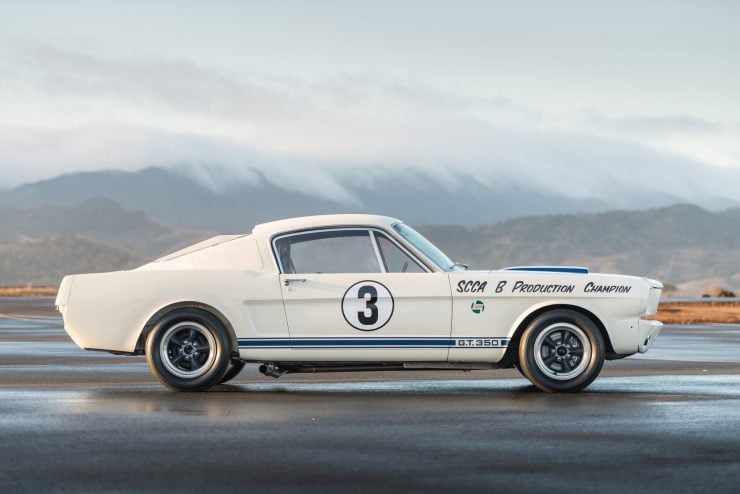
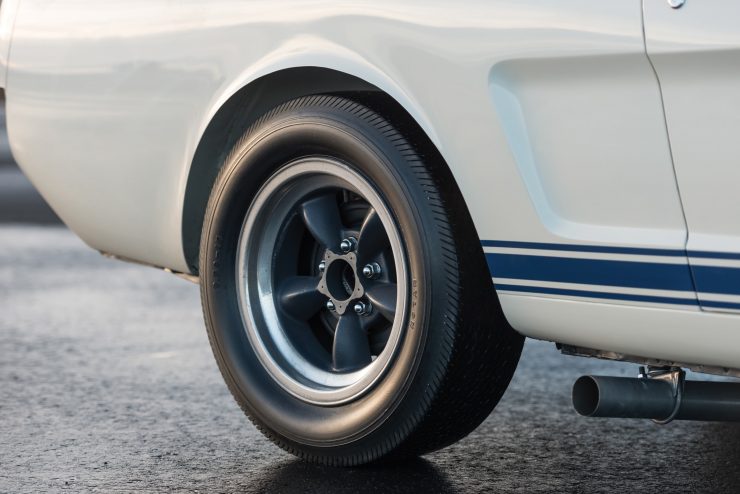
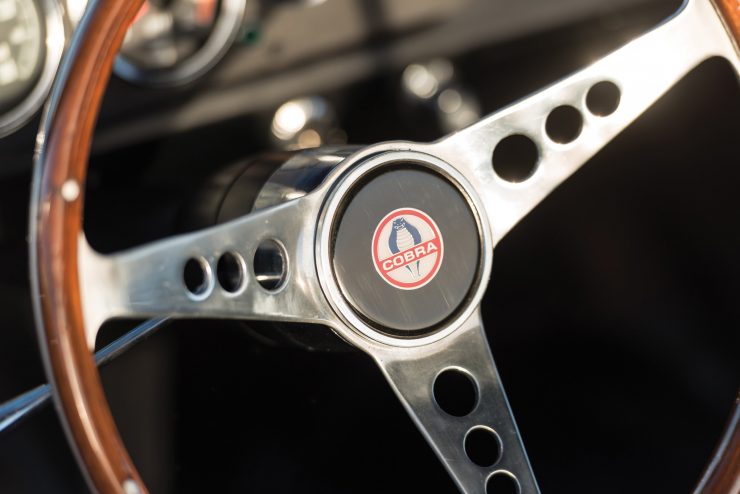
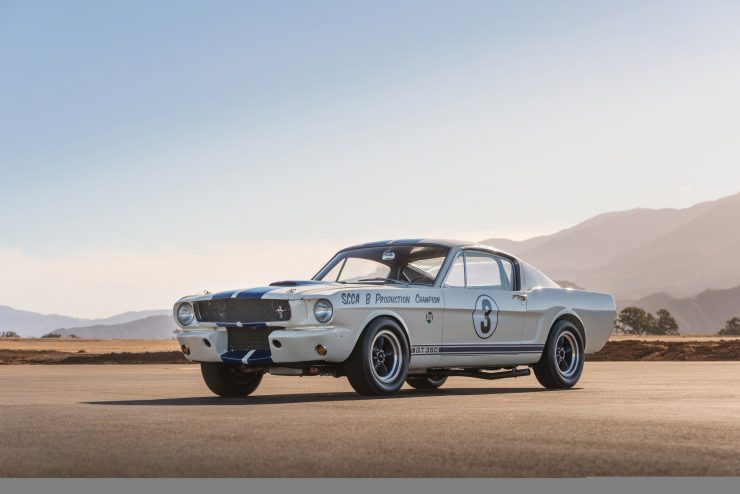
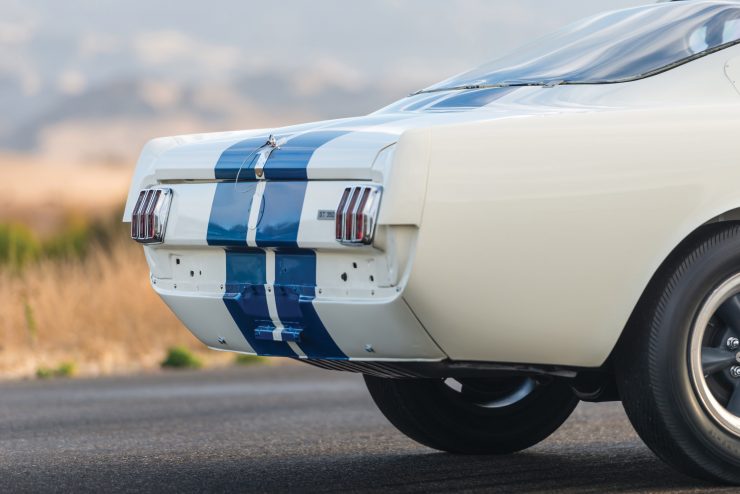
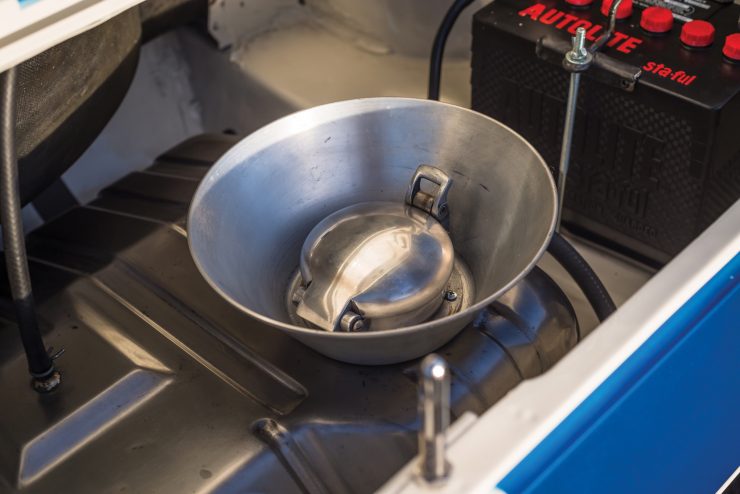
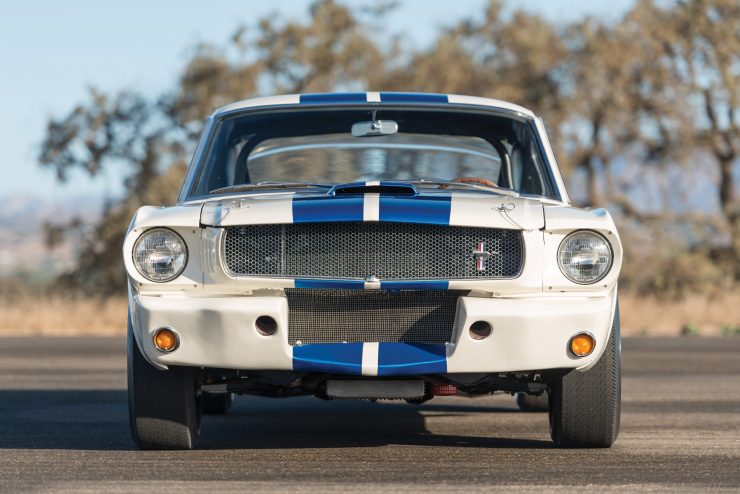
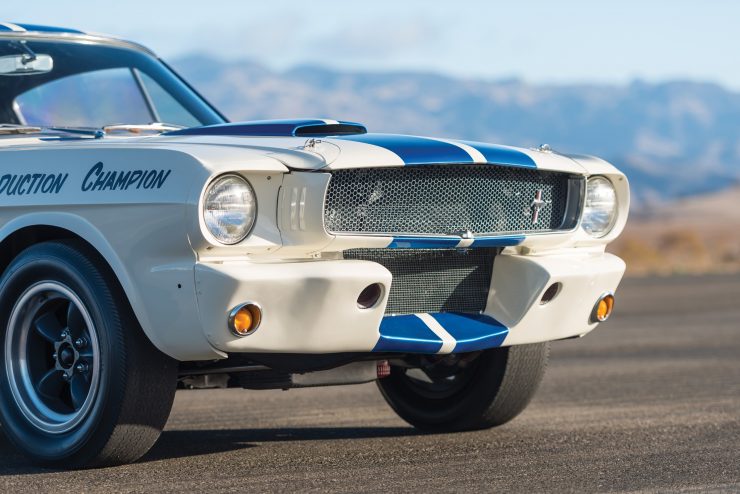
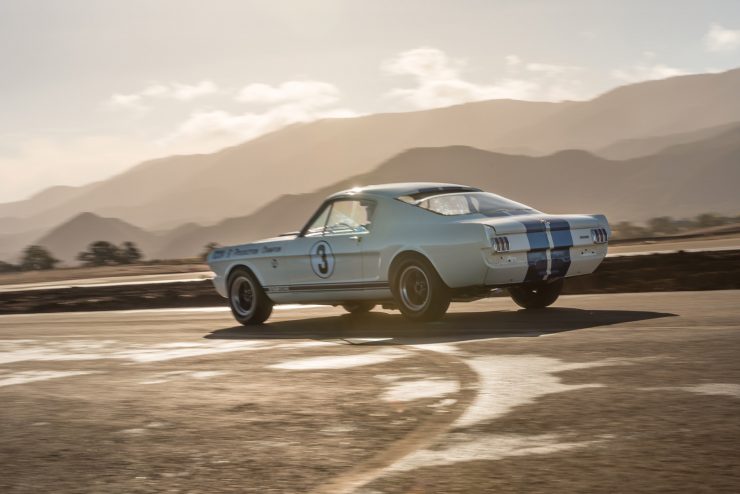
Images courtesy of RM Sotheby’s – Robin Adams ©

